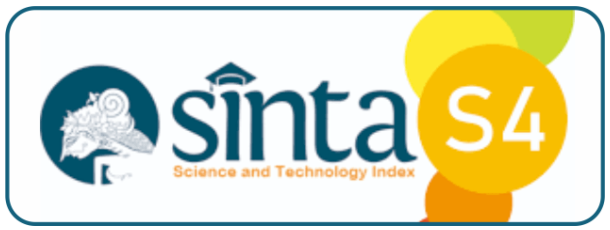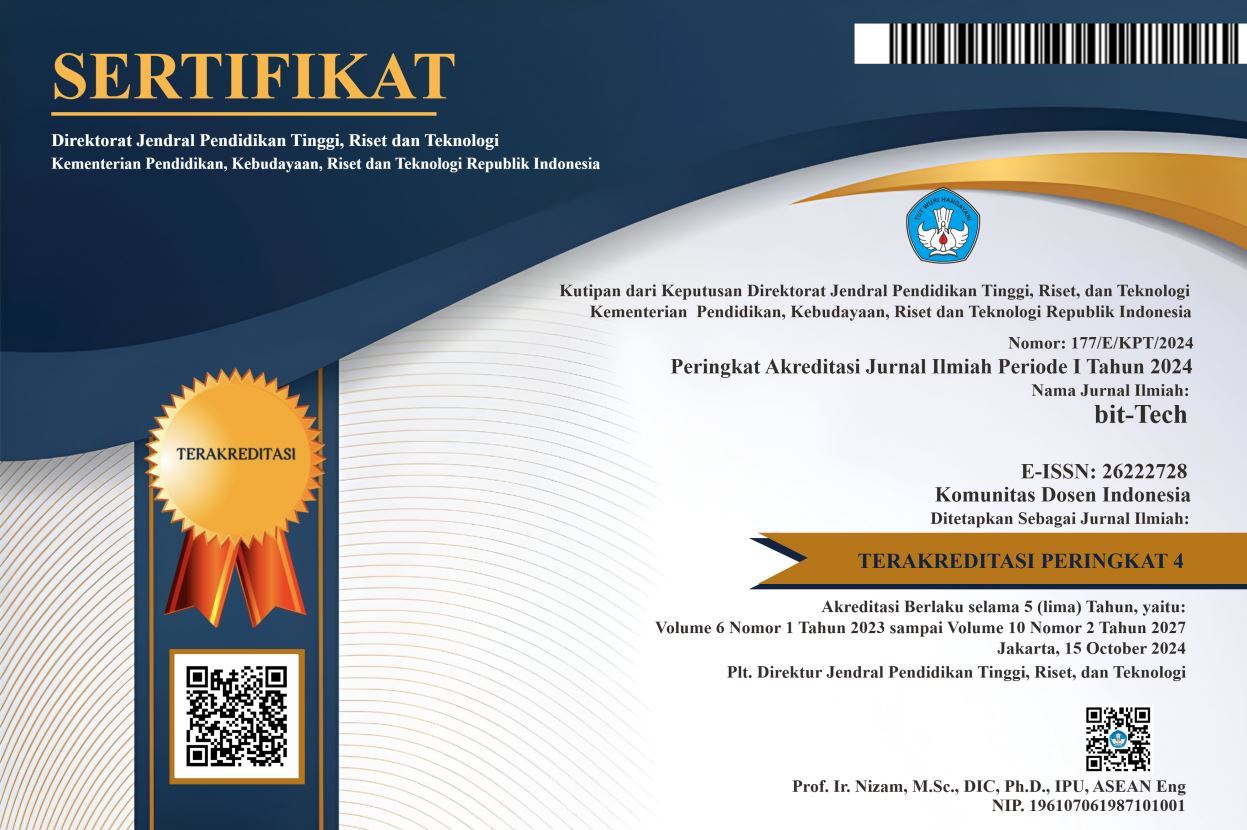The Implementation of ORESTE using Basson Rank for Selecting The TOEFL Preparation Courses in Yogyakarta
DOI:
https://doi.org/10.32877/bt.v6i1.863
Keywords:
Basson rank , Course, Oreste, Selection, TOEFL
Abstract
TOEFL is one of the most frequently used international standardized tests for registering for masters and doctoral degrees, seeking study scholarships or for promotions. Unfortunately, there are still many students and employees who still experience difficulties in taking the TOEFL test. This is what then becomes the reason for them to take English courses, especially to prepare themselves for preparing the TOEFL test. Yogyakarta, which has the title of "Student City", has many campuses and many English courses that offer the TOEFL Preparation Course. There are many types of TOEFL formats and many TOEFL Preparation Programs are offered by English courses in Yoggyakarta. The TOEFL Preparation courses has various programs including different price, teacher competencies, and facilities. In this study, the ORESTE method was used to help the people determining the best course according to its ranking. This method is one of the Multiple Attribute Decision Making (MADM) methods used to find alternatives using predetermined criteria and preference weights. The criteria used are price, instructor, materials, facilities and location. The results showed that the best TOEFL course ranking/order alternative was A16 with a preference score of 3.9425 and the course with the lowest score was A4 with a score of 9.878177.
Downloads
References
S. S. Utami and B. Pirmansyah, “Peningkatan Skor Test Bahasa Inggris (TOEFL) Melalui Pelatihan Secara Intensif,” Ling. Fr. Bahasa, Sastra, dan Pengajarannya, vol. 2, no. 2, p. 36, 2018, doi: 10.30651/lf.v2i2.1477.
Phillips, Complete Course for the TOEFL Test. USA:Longman: Allen Asch., 2011.
A. Yogyakarta, “DESIGNING A TEACHING MEDIA,” vol. XX, no. X, 2019.
B. Sianipar, P. Marpaung, D. Candro Parulian Sinaga, M. Laia, J. Muda No, and S. Utara, “Sistem Pendukung Keputusan Penilaian Kepuasan Masyarakat Terhadap Pelayanan Di Pt. Putri Manalu Bersaudara Menggunakan Metode Oreste Stmik Pelita Nusantara,” J. Tek. Inform. Kaputama, vol. 6, no. 1, pp. 347–352, 2022.
ETS, Understanding your TOEFL® PBT test scores Princeton. New Jersey: Educational Testing Service, 2015.
B. P. Dewi and D. C. P. Sinaga, “Decision Support System for Assessing Community Satisfaction with Sari Mutiara Lubuk Pakam Hospital Services Using the Oreste Method,” Technol. Comput. Sci., vol. 1, no. 1, pp. 2809–171, 2021.
R. H. A. Tanisri, A. Nadia, A. Apriyani, A. Turseno, and A. Yunan, “Pemilihan Vendor Transporter Kapal Cepat Motor Untuk Pengangkutan Logistik Pangan Menggunakan Metode Oreste,” Logistik, vol. 15, no. 02, pp. 101–108, 2022, doi: 10.21009/logistik.v15i02.29361.
F. A. Sianturi, B. Sinaga, and P. M. Hasugian, “Fuzzy Multiple Attribute Decisison Macking Dengan Metode Oreste Untuk Menentukan Lokasi Promosi,” J. Inform. Pelita Nusant., vol. 3, no. 1, pp. 63–68, 2018, [Online]. Available: http://e-jurnal.pelitanusantara.ac.id/index.php/JIPN/article/view/289.
A. Revi, I. Parlina, and S. Wardani, “Analisis Perhitungan Metode MOORA dalam Pemilihan Supplier Bahan Bangunan di Toko Megah Gracindo Jaya,” InfoTekJar (Jurnal Nas. Inform. dan Teknol. Jaringan), vol. 3, no. 1, pp. 95–99, 2018, doi: 10.30743/infotekjar.v3i1.524.
N. Astiani, D. Andreswari, and Y. Setiawan, “Obat Herbal Untuk Berbagai Penyakit Dengan Metode Roc ( Rank Order Centroid ) Dan Metode Oreste Berbasis Mobile Web,” Informatika, vol. 12, no. 2, pp. 125–140, 2016.
M. S. Mubarik, S. A. Khan, A. Acquaye, and M. Mubarik, “Supply chain mapping for improving ‘visilience’: A hybrid multi-criteria decision making based methodology,” J. Multi-Criteria Decis. Anal., no. May 2022, pp. 1–17, 2023, doi: 10.1002/mcda.1807.
A. Mardani, A. Jusoh, K. M. D. Nor, Z. Khalifah, N. Zakwan, and A. Valipour, “Multiple criteria decision-making techniques and their applications - A review of the literature from 2000 to 2014,” Econ. Res. Istraz. , vol. 28, no. 1, pp. 516–571, 2015, doi: 10.1080/1331677X.2015.1075139.
D. Prayudi, R. Oktapiani, and A. A. Gunawan, “Keputusan Promosi Efektif dengan Metode Oreste Fuzzy Multiple Attribute Decision Making ( FMADM ) pada UMKM Gosimplywedding Sukabumi,” J. Inform. …, vol. 6, no. 2, pp. 290–296, 2021, [Online]. Available: https://repository.bsi.ac.id/index.php/unduh/item/341141/9855-30913-1-PB.pdf.
M. R. Fahlevvi, F. Akbar, and F. Nurmansyah, “Sistem Pendukung Keputusan Untuk Menentukan Lokasi Etle (Electronic Traffic Law Enforcement) Pada Kabupaten Majalengka Menggunakan Metode Oreste,” JIKO (Jurnal Inform. dan Komputer), vol. 7, no. 1, p. 52, 2023, doi: 10.26798/jiko.v7i1.723.
D. Alwendi, & Aldo, “Sistem Pendukung Keputusan Pemilihan Toko Handphone Terbaik di Kota Padangsidimpuan Menggunakan Metode Oreste,” J. Sist. Inf. dan Manaj., vol. 8, no. 1, pp. 10–17, 2020, [Online]. Available: https://core.ac.uk/display/326533855.
Downloads
Published
How to Cite
Issue
Section
License
Copyright (c) 2023 bit-Tech

This work is licensed under a Creative Commons Attribution-ShareAlike 4.0 International License.
I hereby assign and transfer to bit-Tech all exclusive copyright ownership rights to the above work. This includes, but is not limited to, the right to publish, republish, downgrade, distribute, transmit, sell, or use the work and other related materials worldwide, in whole, or in part, in all languages, in electronic, printed, or any other form of media, now known or hereafter developed and reserves the right to permit or license a third party to do any of the above. I understand that this exclusive right will belong to bit-Tech from the date the article is accepted for publication. I also understand that bit-Tech, as the copyright owner, has sole authority to license and permit reproduction of the article. I understand that, except for copyright, any other proprietary rights associated with the work (e.g. patents or other rights to any process or procedure) must be retained by the author. In addition, I understand that bit-Tech permits authors to use their papers in any way permitted by the applied Creative Commons license.


 DOI :
DOI :
 Abstract views: 115
/
Abstract views: 115
/  PDF downloads: 129
PDF downloads: 129











